Figures:
- St. Peter's Basilica projected onto a sphere and decimated to 8000 faces (click for a larger picture)
-
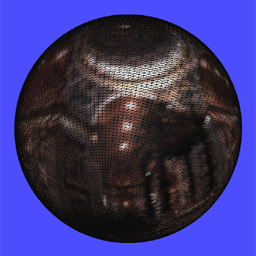
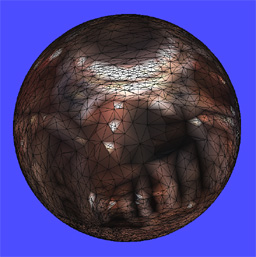
73728 faces 8000 faces
The 'texture' used here is a high-dynamic range texture. Rather than having the colors limited to the range 0-255, the colors are stored as floating point values, representing the actual intensity (and color) of light coming from that direction. The windows in this image have over 1000.0 times the brightness of the rest of the scene; as you can see in the decimated version, the algorithm tries very hard to keep those bright vertices from changing. This effectively isolates the bright light sources, reducing the number of less important (darker) triangles. When calculating the effect of each of these 'light' triangles on an object we are lighting virtually, we are much more interested in the high frequency information of bright spots, and can make do with low frequency information in the dark spots.
- A cow, decimated to 1000 and 500 faces:
-
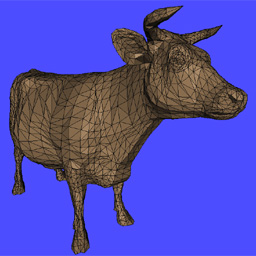
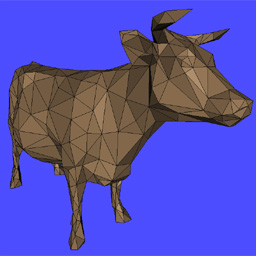
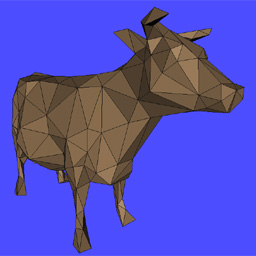
5804 faces 1000 faces 500 faces
The 1000 face model of the cow, while losing some detail, still retains much of the overall shape. At 500 faces however, the model begins to degrade greatly; we lose the tips of the horns and the shape of the ears.
- A spiral color pattern on a curved surface, decimated to 1000 faces:
-

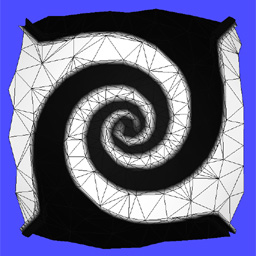

18050 faces 1000 faces 1000 faces
The vertices on an open 'edge' of a mesh tend to shrink inwards. To fix this, Garland and Heckbert suggest adding additional heavily weighted constraint planes (perpendicular to the edge) to the quadrics of 'edge' vertices. In the interior of the mesh, however, we can see that the decimated version has remained fairly faithful to the color contours.
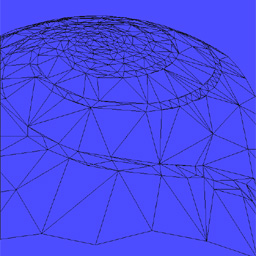
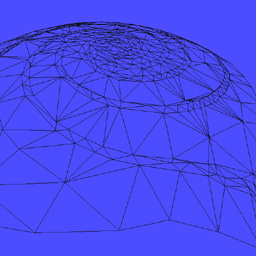
Face Flipping Edge
Contractions AllowedFace Flipping Edge
Contractions Not Allowed
Notice the existence of triangle overlaps in the decimated swirl mesh on the left. When we disallow face flipping edge contractions, (by increasing their error and putting them back in the queue), these overlaps are removed. - A globe color pattern on a sphere, decimated to 8000 faces:
-
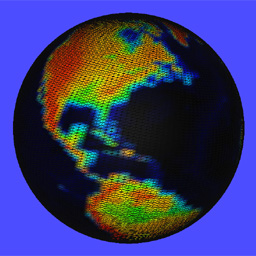

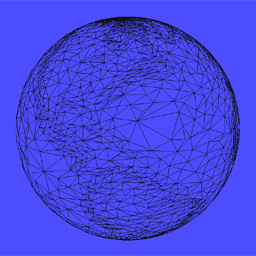
73728 faces 8000 faces 8000 faces
The globe. Note the algorithm tends to prefer smaller triangles near perceived color edges, and decimates the mesh to a greater extent in regions of more constant color.






